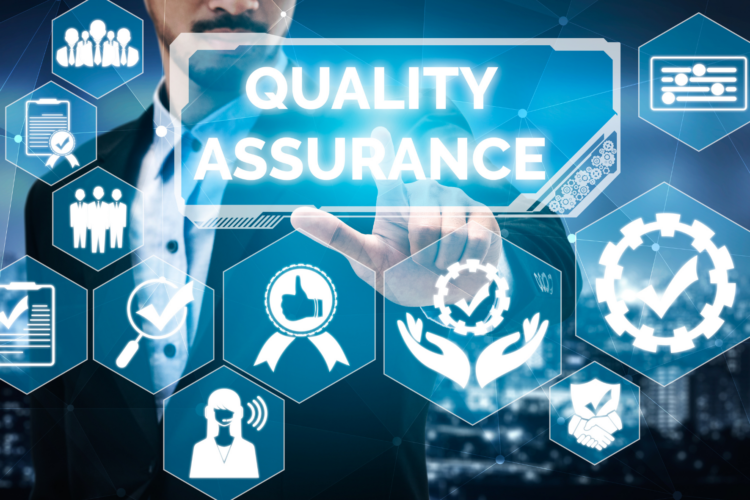In business, where flexibility and scalability are important, staff augmentation has emerged as a critical strategy for companies looking to stay competitive and agile.
This approach allows companies to integrate skilled professionals into their existing teams to meet project demands, access specialized skills, and adapt to market changes without the long term commitment of traditional recruitment.
As businesses across various industries continue to navigate the complexities of growth, innovation, and digital transformation, understanding the nuances of staff augmentation becomes crucial. This blog post addresses staff augmentation, exploring its definition and significance in today’s business landscape.
Whether you’re considering staff augmentation for the first time or looking to optimize your current strategies, the insights shared here will offer valuable perspectives on enhancing agility and achieving business objectives with precision and efficiency.
Staff Augmentation: What You Need to Know

Staff augmentation is a strategic approach businesses use to meet their project needs and skill gaps by hiring external talent on a temporary basis.
This process begins with identifying the specific skills or roles that are missing in the current team. Once these needs are clearly defined, companies can partner with staffing agencies or directly seek out independent contractors with the required expertise.
The key to successful staff augmentation lies in seamlessly integrating these external professionals into the existing organizational structure, ensuring they work collaboratively with the in-house team to achieve project objectives.
With this model, you gain flexibility. You’ll be able to scale the workforce up or down based on project demands, without the long-term financial commitments associated with permanent hires.
Are you wondering what the benefits of staff augmentation are? Let’s explore them:
- Staff augmentation grants access to global talent, allowing companies to source specialized skills swiftly and efficiently.
- Enhances scalability, enabling businesses to adjust their workforce size in response to project requirements and market fluctuations.
- Offers you cost savings over traditional hiring, as it eliminates the overhead costs associated with permanent employment, such as benefits, training, and long-term salaries.
- While staff augmentation presents numerous benefits, it also comes with its set of challenges and considerations. One primary concern is the integration of external personnel into the company culture and workflow.
Ensuring a cohesive team dynamic is essential for project success but can be challenging when blending in-house and augmented staff. Communication barriers, different time zones, and cultural differences can further complicate collaboration.
Do you want a better alternative? Opt for nearshore outsourcing solutions that allow you to access remote experts in the same continent.
Additionally, businesses must carefully manage confidentiality and security risks associated with granting external professionals access to sensitive information and company systems.
To mitigate these challenges, you can:
- Establish clear communication channels
- Invest in team-building activities
- Implement strict security protocols
- Selecting the right staff augmentation partners that aligns with your company’s values and operational needs.
Staff Augmentation Models
Companies continually seek flexible and efficient ways to address their workforce needs. Staff augmentation has become a popular approach in this situation.
As we explained before, this method allows businesses of any size to remain agile, adjusting their teams based on current project demands without the long-term commitment of hiring new full-time employees.
Here, we explore the various staff augmentation models, their advantages and disadvantages, and how to choose the right one for your business.
Short-Term vs Long-Term Augmentation
Short-term augmentation is typically employed to address immediate and temporary project needs. It’s ideal for filling in gaps during peak workloads, covering employee absences, or adding specific expertise not present within the current team for a brief period.
On the other hand, long-term augmentation expands over a more extended period, often used to support ongoing projects, enter new markets, or enhance capabilities without increasing the headcount. This model provides stability and continuity without the commitment of hiring full-time employees.
Skilled-Based Augmentation
This model focuses on acquiring talent with specific skills or expertise that is lacking within the current team. Skilled-based augmentation is highly flexible and can be applied on both a short-term and long-term basis, depending on the project requirements. It’s particularly useful for specialized tasks or projects where niche skills are required.
Project-Based Augmentation
Project-based augmentation involves bringing in an entire team to work on a specific project. This model is beneficial when a project is outside the scope of the business’s core competencies or when it requires a dedicated team to meet its objectives.
It offers the advantage of having a self-managed team that can operate independently, reducing the management burden on the company’s internal staff.
Pros and Cons of Each Staff Augmentation Model
Each staff augmentation model comes with its set of advantages and challenges:
- Short-term and long-term augmentations offer flexibility and cost-effectiveness but may lead to a lack of continuity and challenges in team cohesion over time.
- Skilled-based augmentation ensures access to top-tier expertise and enhances the team’s capabilities but can be more costly and may result in dependency on external talents for critical skills.
- Project-based augmentation allows for focused and efficient project execution but requires careful selection to ensure the external team’s alignment with the company’s culture and goals.
How to Choose the Right Staff Augmentation Model for Your Business
Selecting the appropriate staff augmentation model requires a thorough understanding of your project needs, business objectives, and the specific challenges you aim to address.
Consider the following steps:
- Define your project goals and requirements: Clearly outline what you need to achieve and the skills necessary to accomplish those goals.
- Assess your current capabilities: Understand the gaps in your team’s skills or capacity that need to be filled.
- Consider the project’s scope and duration: Determine whether your needs are short-term or long-term and if they require specialized skills or a dedicated team.
- Evaluate the pros and cons: Weigh the advantages and challenges of each model in the context of your specific situation.
- Consult with a staffing expert: If in doubt, seek advice from professionals who specialize in staff augmentation to find the best fit for your business. You can contact Vanguard-X in order to learn more about IT staff augmentation and how it can benefit you.
The Staff Augmentation Process: Step-by-Step

IT staff augmentation is particularly prevalent in the tech industry, where the demand for specialized skills in software development services, AI software development services, mobile app development services, web development services, big data analytic services, and blockchain development services is high.
Here’s a detailed step-by-step guide to navigating the staff augmentation process effectively.
Identifying Business Needs
The first step in the staff augmentation process is to clearly identify your business needs. Determine which projects require additional resources and pinpoint the specific skills and expertise needed.
Whether it’s software development services for a new app, AI software development services for implementing machine learning capabilities, mobile development services for a cross-platform solution, web development services for an e-commerce site, or blockchain development services for enhancing security, understanding your precise requirements will guide the rest of the augmentation process.
Selecting a Staff Augmentation Vendor Partner
Once you’ve identified your needs, the next step is to select a staff augmentation vendor who can meet those requirements. Look for vendors with a proven track record in the specific area you need help with, such as AI software development services or mobile development services.
Evaluate their portfolio, client testimonials, and their process for sourcing and vetting candidates. A good vendor will not only provide skilled professionals but also understand your business culture and project goals, ensuring a good fit.
Recruitment and Onboarding
After choosing a vendor, the recruitment and onboarding phase begins. The vendor will present candidates that match your specified criteria. It’s crucial to be involved in the selection process, conducting interviews, and assessing candidates based on their skills and how well they align with your project needs.
Once you’ve selected the right candidates, an effective onboarding process is essential to integrate them into your team, familiarize them with your projects, and ensure they have the tools and information needed to start contributing quickly.
Management and Collaboration
Effective management and collaboration are key to the success of any staff augmentation strategy. Establish clear communication channels and processes to ensure seamless collaboration between your internal team and augmented staff.
Regular check-ins, progress reports, and feedback loops can help keep projects on track and address any issues promptly. Utilizing project management tools and platforms can also enhance collaboration and productivity.
Compliance and Legal Considerations
Navigating compliance and legal considerations is a critical aspect of the staff augmentation process.
Ensure that your vendor partner complies with all relevant laws and regulations, including labor laws, data protection, and intellectual property rights. Contracts should clearly outline the terms of engagement, confidentiality agreements, and liability clauses. Proper due diligence will protect your business and ensure a smooth partnership.
Evaluating Success and Long-Term Planning
Finally, evaluating the success of the staff augmentation initiative is crucial for understanding its impact and planning for the future. Assess the performance of the augmented staff, the quality of work delivered, and how well the collaboration met your project goals.
Gather feedback from both your internal team and the augmented staff to identify areas for improvement. Use these insights to refine your staff augmentation strategy and make informed decisions about future needs, whether it’s continuing to augment staff for ongoing projects or integrating new technologies and services.
Best Practices for Successful Staff Augmentation Processes
Staff augmentation can significantly enhance a company’s ability to execute projects by providing access to skilled talent on demand. However, to fully leverage the benefits of staff augmentation, especially in dynamic fields like software development, it’s crucial to adhere to best practices that ensure smooth integration and operation.
Here are key strategies to achieve successful staff augmentation processes.
Effective Communication Strategies
The foundation of any successful staff augmentation strategy lies in effective communication. Establishing clear, open, and consistent channels of communication ensures that both internal teams and augmented staff are aligned with project goals, responsibilities, and expectations.
Utilize collaboration tools that support real-time communication and project management to facilitate seamless interaction. Regular meetings, whether virtual or in-person, should be scheduled to discuss progress, address challenges, and adjust plans as necessary.
Encouraging an environment where feedback is freely shared can also lead to improvements and foster a sense of inclusion and team spirit.
Ensuring Cultural Fit and Team Cohesion
Integrating external talent into existing teams goes beyond matching skills and experience; ensuring a good cultural fit is equally important. A strong alignment in work ethic, values, and company culture contributes to team cohesion and project success.
During the recruitment phase, assess candidates not only for their technical abilities but also for their interpersonal skills and compatibility with your team’s culture.
Once onboarded, foster an inclusive atmosphere that welcomes diverse perspectives and encourages collaboration. Organizing team-building activities can also help in blending internal and augmented staff, promoting a unified team environment.
Flexibility and Adaptability in Processes
The nature of staff augmentation demands flexibility and adaptability from both the organization and the augmented staff. Projects may evolve, requiring shifts in roles, responsibilities, or even the technology stack used.
Companies should be prepared to adjust processes and workflows to accommodate these changes efficiently.
Similarly, augmented staff should be selected for their ability to adapt to new environments and challenges quickly.
Encouraging a mindset of agility and continuous improvement among all team members can significantly enhance the productivity and success of augmented projects.
Continuous Learning and Development Opportunities
The tech industry is fast-paced, with new technologies and methodologies emerging regularly. Providing continuous learning and development opportunities is essential to keep both internal and augmented staff up-to-date with the latest trends and skills.
This not only benefits the current project by ensuring the team is proficient in the most relevant and efficient tools and practices, but it also contributes to employee satisfaction and retention. Consider offering access to online courses, workshops, and conferences that align with your project needs and employees’ professional growth ambitions.
Unlock Your Business’s Success with Vanguard-X’s Staff Augmentation Services
The staff augmentation process presents a strategic opportunity for businesses to scale their operations dynamically, access specialized skills on demand, and enhance their project execution capabilities.
By adopting best practices such as fostering effective communication, ensuring cultural fit, maintaining flexibility in processes, and providing continuous learning opportunities, companies can seamlessly integrate augmented staff into their teams. This approach not only accelerates project timelines but also enriches the internal team with new perspectives and expertise.
Choosing the right partner for IT staff augmentation is crucial to realizing these benefits. Vanguard-X stands out as a leader in this space, offering a comprehensive range of IT staffing solutions tailored to meet the unique needs of your projects.
With a focus on quality, compatibility, and agility, Vanguard-X ensures that your augmented staff is not just a temporary addition but a valuable extension of your team.
We invite you to explore the possibilities of enhancing your project outcomes and operational efficiency with Vanguard-X. Follow us on LinkedIn for the latest insights and updates from the world of IT staff augmentation. Ready to elevate your projects with the right talent?
Contact Vanguard-X now and discover how our IT staff augmentation services can drive your success forward.
FAQ
What is staff augmentation and why is it important in today’s business landscape?
Staff augmentation is a strategy that involves hiring external talent on a temporary basis to complement the skills and capabilities of the existing workforce.
This approach is particularly important in today’s fast-paced business environment as it allows companies to quickly adapt to market demands, fill skill gaps, and efficiently manage workload without the long-term commitment of hiring full-time employees.
It provides businesses with the flexibility to scale their teams up or down based on project requirements, making it an essential practice for staying competitive.
How does the staff augmentation process work?
The staff augmentation process begins with identifying the specific skills and expertise needed to support a company’s objectives or projects. Businesses then partner with staffing agencies or IT staff augmentation firms that specialize in sourcing talent that matches their requirements.
These agencies vet candidates thoroughly to ensure they are a good fit for the company’s needs and culture. Once suitable candidates are found, they are onboarded and integrated into the company’s existing teams, working under the company’s management and direction for the duration of their contract.
What are the main benefits and challenges of staff augmentation for businesses?
The main benefits of staff augmentation include access to specialized skills, increased flexibility, cost savings compared to hiring full-time employees, and the ability to quickly adapt to changing business needs.
However, challenges can include ensuring a good fit between the augmented staff and the existing team, managing remote workers effectively, and integrating external talent into the company’s workflows and culture.
Can you explain the different staff augmentation models and how to choose the right one?
There are several staff augmentation models, including short-term, long-term, and project-based augmentation, each catering to different needs. Short-term augmentation is ideal for immediate, temporary needs, such as covering for employee absences or adding extra support during peak times.
Long-term augmentation suits ongoing projects requiring specialized skills not available in-house. Project-based augmentation is tailored for specific projects with defined timelines. Choosing the right model depends on the company’s specific needs, the duration of the requirement, and the level of expertise required.
What are some best practices for successfully implementing a staff augmentation strategy?
Best practices for implementing a staff augmentation strategy include clearly defining project requirements and roles, selecting an augmentation partner with a proven track record, ensuring a cultural and operational fit of the augmented staff, fostering open communication, and providing adequate support and resources for both internal and augmented staff to collaborate effectively.
Regularly reviewing performance and feedback from all parties involved also helps refine the process for future engagements.
How should a business evaluate the success of its staff augmentation efforts and plan for the long term?
Evaluating the success of staff augmentation efforts involves assessing the impact on project outcomes, productivity, and overall business objectives. Key performance indicators (KPIs) such as project completion time, cost savings, quality of work, and employee satisfaction can provide valuable insights. Feedback from both internal teams and augmented staff is also crucial.
Based on these evaluations, businesses can adjust their augmentation strategies, address any challenges, and plan for long-term staffing needs, ensuring they continue to leverage staff augmentation effectively for sustained growth.










